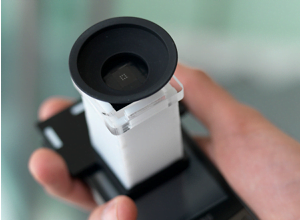The energy flowing last month through Tampa’s mega convention center at the 2011 American Telemedicine Association (ATA) conference was electrifying. Surrounded by brilliant telemedicine experts all competing to showcase their devices and products, there was one common denominator, the patient.
The energy flowing last month through Tampa’s mega convention center at the 2011 American Telemedicine Association (ATA) conference was electrifying. Surrounded by brilliant telemedicine experts all competing to showcase their devices and products, there was one common denominator, the patient.
At the same time, these exhibitors displayed their latest developments in telemedicine technology, concurrent sessions continued behind conference room doors about the efficacy of mobile phone usage to improve patient health, ROI for chronic disease management through mobile health and outcomes for remote patient monitoring focusing on whether telemedicine is excluded from meaningful use and reasons why telehealth should be a key component in Accountable Care Organizations (ACO).
Step outside the lines of the conference rooms and outside the convention center and be amazed how telemedicine or telehealth isn’t front and center.
A question often asked by patients is “What is telehealth?”
Telehealth is amazing technology that can truly help improve the lives of patients; however, it is slow to adopt in the health care arena.
Imagine patients being able to communicate with their physicians and other healthcare providers easily and effectively. For instance, patients can input their health and biometric data from consumer monitoring devices that measure blood sugar, weight, and blood pressure (to name a few) into smartphones or PCs; which then, safely integrates into the electronic health record (EHR, PHR, EMR) for instant communication and feedback from physicians and other healthcare providers.
Or, imagine late at night, a patient interacting from a cell phone or a computer with a physician or other healthcare provider that could help save a trip to an emergency room. Envision patients monitoring their chronic diseases independently while living at home.
US Department of Health and Human Services – Health Resources and Services Administration (HRSA) define Telehealth:
“Telehealth is the use of electronic information and telecommunications technologies to support long-distance clinical health care, patient and professional health-related education, public health and health administration. Technologies include videoconferencing, the internet, store-and-forward imaging, streaming media, and terrestrial and wireless communications.”
Patients need to know the value of telehealth. For the most part, they have no idea.
Why is telehealth slow to be adopted in the health care arena?
“Adoption to telehealth has been slow because healthcare professionals are still not accustomed to using the technology,” said Joseph Kim, MD, MPH, President of Medical Communications Media, in an email. “Simple technologies like video streaming and videoconferencing are not a routine part of the average healthcare professional’s workflow. Hence, the average HCP isn’t accustomed to interacting with patients through the use of videoconferencing technology to deliver patient care,” he added.
Suneel Ratan, Principal of Care Architecture consulting firm, said in an email that “The telehealth market has developed slowly for three key reasons: first, the payment structures or the stance of the existing delivery system largely do not support the kind of continuous chronic care models that telehealth supports. Second, existing technologies can be difficult to implement and scale. Beyond that, for many people, the jury is still out on telehealth’s ROI.”
He added, “There is certain inevitability to the widespread adoption of telehealth, in much the same way that banking has moved online.”
What the future of telehealth?
“Telehealth can reduce costs, improve efficiency, and support a higher quality of life, particularly for the elderly and disabled. The technology is moving ahead rapidly – and on to devices such as cell phones – in a way that will make it much cheaper and more scalable,” said Ratan.
Kim believes, “The future in telehealth is mostly in developing nations. We will see clinicians diagnosing and treating diseases in remote areas by having ‘virtual’ visits with patients who do not have access to local hospitals or clinics. Ordinary citizens equipped with a mobile device will become the conduit that will allow these patients to gain access to care.
“In developed nations like the USA, we will see telehealth improving clinical inefficiencies and bridging practice gaps in rural areas. We will also see more telehealth being used during emergency situations where an EMT may use a mobile device to communicate with the ER through the use of real-time video. Stroke assessment and treatment will continue to be a big area for telemedicine. Plus, video conferencing will replace the traditional telephone. The next time you call your doctor at night or on the weekends, you’ll be showing him/her a video of your infant’s rash and you’ll be interacting with your doctor using real-time video.”
The amazing telehealth technology exists. It’s not in the planning stages. It needs to be embraced and adopted to allow patients continuous quality care. After all, isn’t technology about the patient?








